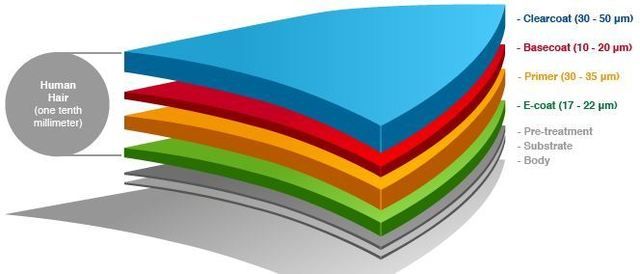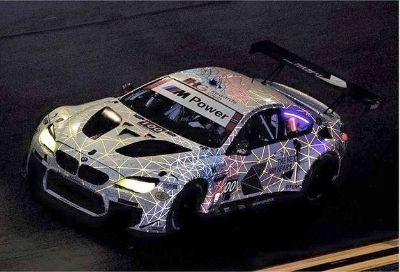stefan_ wrote:Does the matte paint affect in any way the airflow over the surface of the bodywork that is applied to? I am thinking that compared to glossy paint, it can slow down (even by the tiniest bit) the air over that particular surface.
That is a excellent question Stefan. Cars that are manufactured now have a special clear coat that is applied over the matte/flat paint finish, unlike years back when they first introduced these types of paint finishes.
example of today's automotive paint systems from BASF ( similar to other OEM's )
Using the highest values given, we get a total thickness of 127 µm that equates to 0.127mm. as thick as a human hair.

If this was the old style of flat/matte paint we wouldn't have the clear coat applied leaving the base coat ( flat paint ) exposed, which is why you had trouble clean it or people touching the car, because every time the little paint particles got knocked over leaving a "shinny" spot or a finger print.
These paint particles are small, I mean were talking about some really small numbers, in the range of 0.25 µm -1 µm
that's 0.00025 mm to 0.001 mm in thickness or in this case height.
I'm not sure that difference would show up in a wind tunnel test, I would have to assume you would need to go to some University lab or even a place like NASA to see a difference in airflow over hi-gloss paint vs. old style flat finish
Sorry I can't give you a firm yes or no answer, my personal opinion would be that it wouldn't make a difference, a bug stuck to the front wing would have more of an effect on a F1 car's aero then using an automotive matte finish paint












